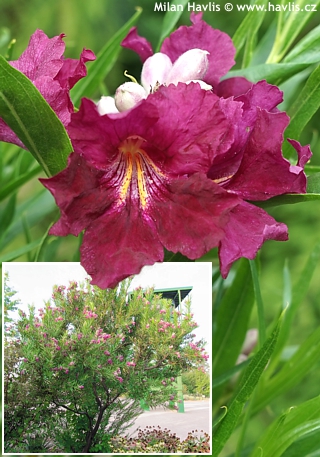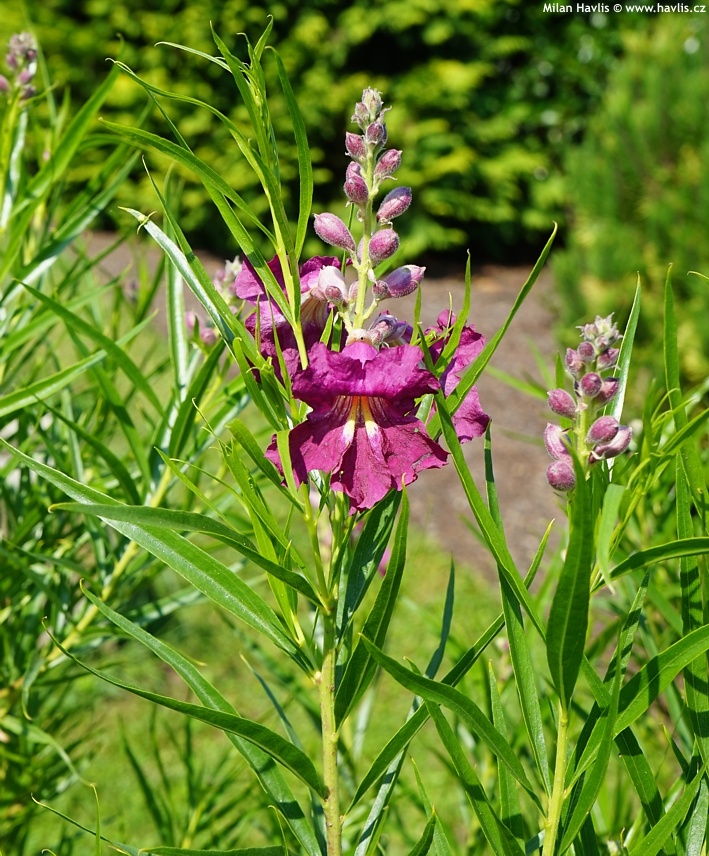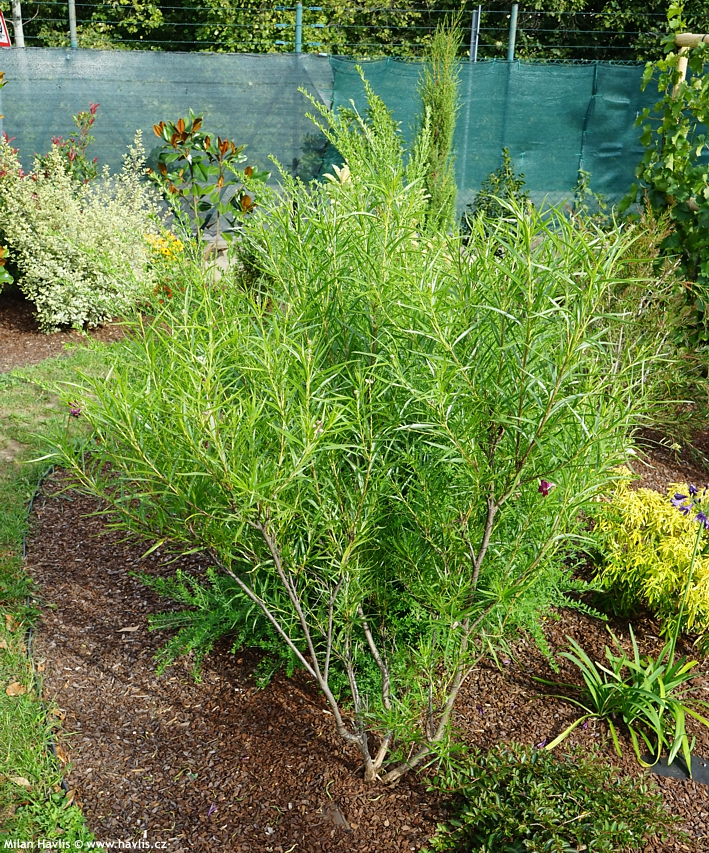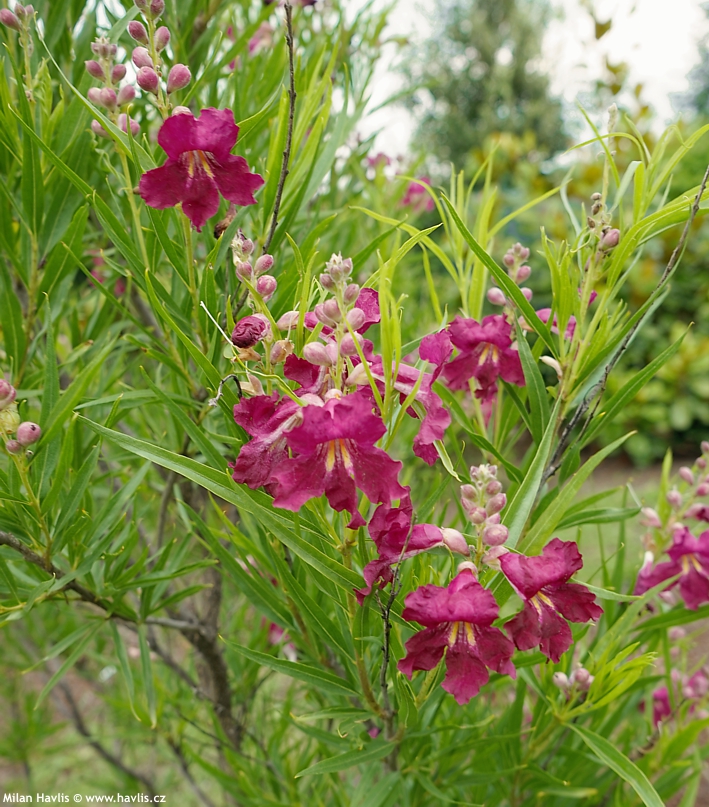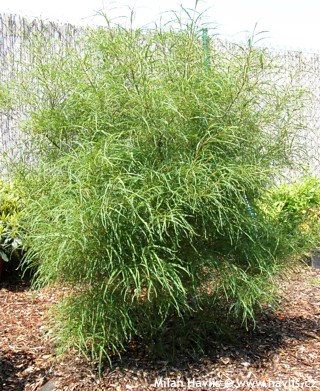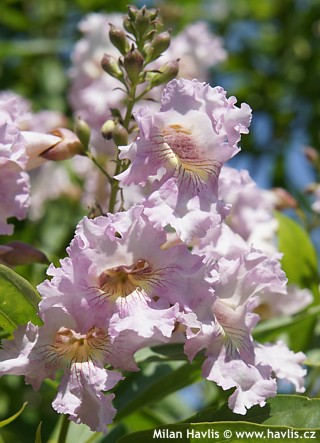Chilopsis linearis 'BURGUNDY' desert willow
Chilopsis
Desert willow is a taxon from south-eastern USA and Mexico where it thrives under hot sun and with limited water supply. Its name refers to foliage whose resemblance to willow leaves is remarkable. It belongs to the same family as catalpa (Indian bean tree) – Bignoniaceae – and in 1970’s it was used for intergeneric hybridization with catalpa resulting in chitalpa.
Burgundy is a beautiful variety of desert willow of untraceable origin, possibly a selection of Rio Salado with slightly paler flowers. Burgundy desert willow makes deep maroon, velvety flowers with white and yellow stripes in the throat. They are slightly fragrant and formed in narrow, terminal, upright racemes and each raceme holds up to 16 flower buds but their number decreases during the growing season. As the racemes appear at the tips of new growths and those are formed continuously from late spring till late summer, flowering time is considerably extended and lasts from June until September.
Deciduous leaves are commonly 10-14 cm long, exceptionally up to 25 cm long, fresh green, and very narrow – only a few millimetres wide. They do not suffer from powdery mildew like catalpa’s leaves. Owing to such fine foliage the plant brings an exotic feeling and lightness to any landscape.
Chilopsis is not a fast grower. It can make 20-30 cm per year and can easily be pruned in early spring after all frosts. It emerges late like many shrubs and trees flowering in summer but soon catches up all its friends nearby. Young plants are rather slender and become broader with age. Mature plants can possibly reach the same width as height.
It needs direct sunlight and a hot summer for abundant flowering and is exceptionally drought tolerant once established. Its soil must be well-drained to prevent the roots from rotting. Chilopsis used to be rated a tender plant until late 20th century when it underwent multiple trials in the USA that proved it hardy down to USDA zone 6 (-23 °C). We have grown it for a few years only, and so far it has withstood -20 °C without any injury whatsoever.
Last update 07-10-2021
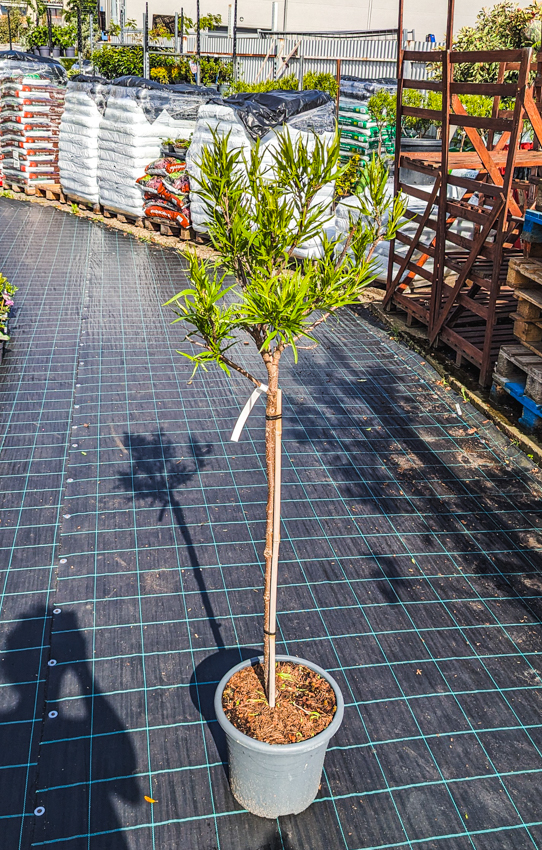
2 541,5 Kč

2 541,5 Kč
Goods are shipped all over Europe. For Russia and U.K. and for further details please read about SHIPPING OPTIONS HERE.
Are you interested in a serious discount for orders NOV-FEB? Check your options here.
THE PRICES INCLUDE VAT of 15%. For quick conversion you can use 1 CZK = approx. 0.04 EUR
- STANDARD QUALITY - Plants of this group are 1st class quality with number of branches and overall density adequate to their size and age, considering they were container grown.
- DE LUXE QUALITY - This label guarantees a luxurious quality of manually selected plants that, compared to their height and age, are exceptionally dense and beautiful.
- EXTRA - These plants are usually mature and bigger specimens with exceptional overall appearance.
- STANDARD (as described in the plant form) means a tree with a trunk of 190-210 cm and a crown at the top, unless specified differently. The commercial size for trees is their girth measured in the height of 1m from ground.
- HOBBY - These plants are of the same quality as our standard-quality plants but younger and therefore cheaper.
- SHRUB - a woody plant with branches growing bushy from the ground level.
- HALF-STANDARD or MINI-STANDARD - a small tree with shorter trunk, its size is usually specified.
- FEATHERED - These are trees with branches growing already from the base of the trunk and up along the stem.
- GRASSES and PERENNIALS - Sizes given usually read the diameter of the pot or the clump, as specified.

































